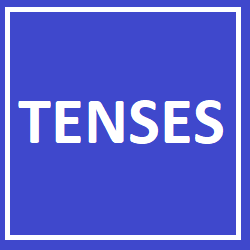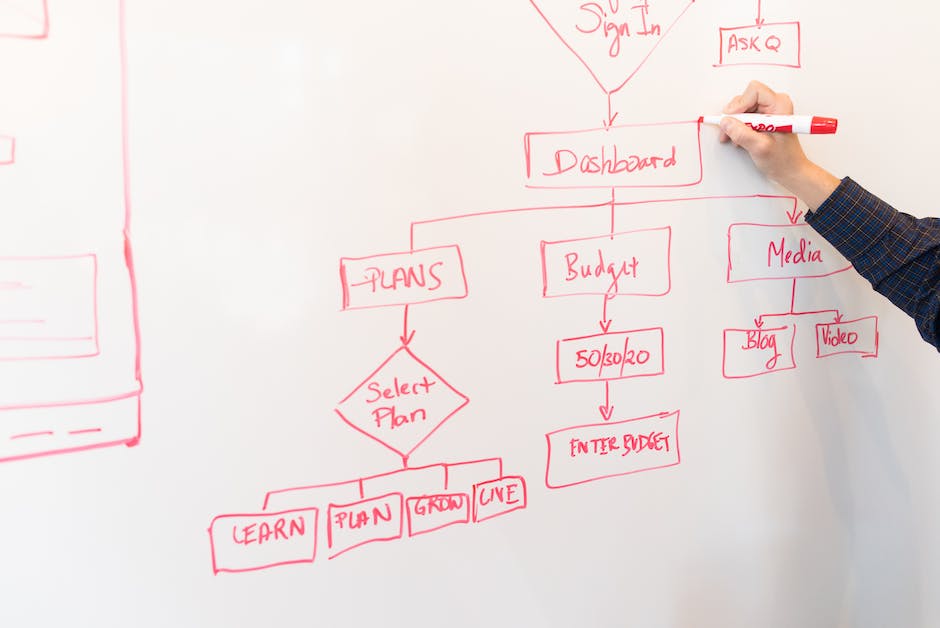
Tenses
English Tenses
Tenses, in English grammar, are structures used to express the time of actions and the relationships between different points in time. English has various tenses to indicate different time frames and aspects of actions. Here are some commonly used tenses:
|
English, renowned for its vast array of tenses, can often be a complex language to navigate. Fortunately, with a clear comprehension of the structures and their proper usage, overcoming this challenge becomes much feasible. This insighful article unravels the intricacies of English tenses, beginning with a bird’s-eye view of the past, present, and future tenses. It outlines both regular and irregular verb forms to furnish readers with a fundamental understanding of tenses. Subsequently, a dive into the finer categorizations, namely the simple, continuous, and perfect forms within each tense would be taken. To ensure that this knowledge doesn’t remain restricted to theory, the article will offer numerous examples and illustrate practical applications in everyday contexts, like narration, event reporting, or future planning discussions.
Understanding the English Tenses
Understanding the English Tenses
The English language comprises of three main tenses: past, present, and future. Each of these tenses further breaks down into four aspects: simple, continuous (also known as progressive), perfect, and perfect continuous, making in total twelve tenses. Understanding these tenses and their correct utilization is fundamental to mastering English.
Past Tense
The past tense denotes an action or a state of being that occurred in the past.
Simple Past Tense
The Simple Past Tense expresses completed actions that happened at a specific time in the past. For example, “I read a book yesterday.”
Past Continuous Tense
The Past Continuous Tense refers to an action that was in progress at a certain moment in the past but not necessarily finished. For example, “I was reading when he came.”
Past Perfect Tense
The Past Perfect Tense talks about a completed action that happened before another past action. For instance, “I had left when you arrived.”
Past Perfect Continuous Tense
The Past Perfect Continuous Tense indicates an ongoing action that was completed at some specified point in the past. For example, “I had been reading for two hours before he came.”
Present Tense
The present tense describes actions or conditions that are underway at the moment or that happen on a regular basis.
Simple Present Tense
The Simple Present Tense describes general truths or habitual actions. For instance, “She writes every day.”
Present Continuous Tense
The Present Continuous Tense refers to actions happening at the exact moment of speaking or current, but not necessarily ongoing actions. For example, “I am reading a book.”
Present Perfect Tense
The Present Perfect Tense indicates a link between the present moment and a past action, usually emphasizing the result of the action. For example, “I have read that book.”
Present Perfect Continuous Tense
The Present Perfect Continuous Tense describes actions that were initiated in the past but are still ongoing, or effects of that past action that are still relevant. For instance, “I have been reading this book.”
Introduction to Future Tense in English
The future tense in English showcases actions or conditions that are set to occur in time yet to come.
Details of the simple version of Future Tense
An aspect of this tense, the Simple Future Tense, is used to predict a future event or establish a certainty. A sample sentence is, “I will read a book.”
Using Future Continuous Tense
Coming to the Future Continuous Tense, this aspect relates to an activity that is destined to be in progress at a specified future time. A sentence that uses this tense might read, “I will be reading a book at 7 pm tonight.”
Comprehending Future Perfect Tense
The Future Perfect Tense talks about an action that will conclude by a specific time in the future. It can be used in sentences such as, “I will have finished reading the book by tomorrow.”
The complexity of Future Perfect Continuous Tense
The Future Perfect Continuous Tense, meanwhile, describes a continuous action that will come to a conclusion at a definite point in the future. For instance, “I will have been reading for two hours before you arrive.”

Exploring Simple, Continuous, and Perfect Tenses
An Overview of Simple Tenses
Simple tenses in English are used to express factual information or regular, habitual activities. There are three divisions: simple past, simple present, and simple future.
The simple past tense serves to describe an event that transpired in the past, typically signposted by time indicators such as ‘yesterday,’ ‘last week’, or ‘a year ago’. An example in use is: “Mary tidied up her room yesterday.”
The simple present tense, meanwhile, represents a fact, repetitive activity, or universally true statement. It is often utilized with adverbs of frequency such as ‘always’, ‘never’, ‘sometimes’, ‘often’. For example: “John typically heads to the gym post-work.”
Lastly, the simple future tense is employed to express a prediction or a spontaneous decision. It is frequently used with terms like ‘will’ or ‘shall’. Sample sentence: “It is likely to rain tomorrow.”
Continuous Tenses
Continuous (also known as progressive) tenses express an ongoing activity that is in progress at a specific time (past, present, or future).
The past continuous indicates an ongoing activity that was happening at a specific moment in the past, often interrupted by another past event. For example: “While I was reading, the phone rang.”
The present continuous conveys an activity currently in progress. An example would be: “Maria is studying for her exams.”
The future continuous represents an ongoing action that will occur in the future, often at a specific time. For example: “They will be eating dinner at 7 PM tonight.”
Perfect Tenses
Perfect tenses indicate completed actions. They are created with the auxiliary verb ‘have’ and the past participle of the main verb. Like the simple and continuous tenses, perfect tense also subdivides into past, present, and future.
The past perfect refers to an action that was completed before another action or time in the past. For instance: “He had already left when she called.”
The present perfect communicates an action that happened at an unspecified time before now or an action that started in the past and continues in the present. For example: “They have visited Paris three times.”
The future perfect indicates an action that will be complete before some time in the future. An example would be: “By the time you arrive, we will have finished dinner.”
Summary
To effectively communicate in the English language, learning how to discern and apply simple, continuous, and perfect tenses is crucial. The proper use of these tenses enables you to accurately depict activities or conditions that have happened in the past, are ongoing in the present, or will take place in the future. With enough practice, mastering these tenses becomes second nature.

Using Tenses in Real-Life Contexts
Applying the Present Simple Tense in Everyday Life
One of the most practical applications of tenses is the use of the Present Simple tense in narrating daily routines and consistent actions. This tense is used frequently in daily communication to indicate habitual activities or unchanging circumstances. For example, saying “I drink coffee every morning” or “She works at a bank” reflects the Present Simple tense. In providing general facts or stating personal opinions, we also use this tense, as in “The sun rises in the East” or “I like pizza.”
Present Continuous Tense in Current Actions
Looking at real-life scenario usage, the Present Continuous tense expresses actions happening right now. For instance, if you’re having a chat with someone, you might say, “I’m reading a book about English tenses,” or if you see it’s raining, you’d say, “It’s raining right now.”
Past Simple Tense in Narrations
The Past Simple tense is mostly used to talk about completed actions in the past. It’s applicable in storytelling or sharing past events. For example, “Last night, I watched an interesting movie,” or “She visited her uncle last week.”
Past Continuous for Interrupted Past Actions
The Past Continuous tense often contextualizes an action interrupted by another action. It helps in conjunction to the Past Simple tense, setting a scene in a story. For example, “I was making dinner when the phone rang.”
Present Perfect for Experience and Changes
The Present Perfect tense is usually used to talk about experiences and changes that have happened up to now, without specifying when. For instance, “I’ve visited Paris twice,” signifies experience, while “She’s dyed her hair black,” shows change.
Future Simple for Future Plans
The Future Simple tense, expressed through ‘will’ or ‘shall’, is often used to make future predictions or express decisions made at the moment of speaking. Examples include: “It will rain tomorrow” (prediction) or “I will call you when I arrive” (instant decision).
Using would have, could have, should have
These phrases denote unreal or hypothetical scenarios and regrets. The phrase ‘would have’ implies something that didn’t happen, ‘could have’ suggests missed opportunities, and ‘should have’ represents regret, like “I should have studied more for the exam.”
Present Perfect Continuous for Ongoing Actions
The Present Perfect Continuous tense expresses actions that began in the past and continue into the present moment, often linked with ‘for’ or ‘since.’ For instance, “I’ve been working here since 2005” or “She’s been studying for three hours.”
Future Continuous for Predictable Activities
The Future Continuous tense, combining ‘will’ and ‘be’ with a verb+ing, signifies an action will be in progress at a certain future time. For example, “This time next week, I’ll be flying to Hawaii.”
The Intricacies of Future Perfect Tense
In your journey to master English tenses, understanding the Future Perfect tense becomes pivotal. This tense implies that an action will reach its completion before another event or moment in the future. For example, consider the sentence “She will have finished her assignment by the time you arrive.” Understanding the intricacies of tenses such as the Future Perfect helps in using them aptly in various real-world situations.

Common Mistakes and How to Avoid Them
Avoiding Common Mistakes with Simple Present and Present Continuous Tenses
Moving forward from Future Perfect, there are some common pitfalls when it comes to using the Simple Present and Present Continuous tenses. Many people accidentally interchange these two tenses. For instance, saying “I am understanding you” instead of the correct “I understand you” is a common mistake. In English, ‘understand’ is a stative verb, which are generally used to describe states rather than actions. To avoid these errors, one must remember that the Present Continuous tense is used for actions taking place currently, while the Simple Present tense is used for habitual actions, general truths, and states.
Improper Conjugation in Past Simple Tense
Another mistake pertains to the misuse of irregular verbs in past simple tense. Some people tend to add ‘-ed’ to every verb to indicate past tense, forgetting that this only works for regular verbs. For instance, ‘run’ in its past simple tense is ‘ran’ – not ‘runned’. Make sure to familiarize yourself with the past tense form of irregular verbs to avoid this mistake.
Confusing Past Simple with Present Perfect Tense
It’s also common to confuse the past simple tense with the present perfect tense, which can lead to incorrect sentence structures. For example, it would be a mistake to say “I have seen that movie last week.” The correct form should be “I saw that movie last week,” with past simple tense indicating a completed action in a specified time in the past. The present perfect tense is used when an action happened at an unspecified time before the present, or the action continues till now.
Misusing Future Simple Tense
When indicating future actions, be mindful not to use ‘will’ instead of ‘going to’. The future simple tense with ‘will’ is used for spontaneous decisions, promises, and offers, or when we predict or guess about future events. ‘Going to’ is used when the decision about the future action was made before the moment of speaking.
Incorrect Usage of Past Perfect Tense
People often misuse the past perfect tense by using it to refer to actions completed in the past. An established concept is that the past perfect tense is used to convey an action that happened before another action in the past. Incorrect: “I had seen a movie.” Correct: “I had seen the movie before she asked me about it.”
Future Perfect Continuous Tense Errors
Future perfect continuous tense is often misunderstood and misused. The correct usage is to show an action that will continue up until an event or time in the future. Mistakes occur when these tenses are interchanged. For example, it’s wrong to say “I will have working for five hours by the time he arrives.” The correct version is “I will have been working for five hours by the time he arrives.”
In summary, understanding the correct usage of English tenses requires a lot of practice and patience. Regular practice and consistent exposure to the language in written and spoken forms should considerably reduce the occurrence of these common errors.

As we navigate through the intricacies of the English language, understanding and mastering tenses becomes an integral part. Undoubtedly, learning to use them correctly increases your proficiency and fluency in the language. However, it’s equally important to be aware of common pitfalls in the usage of tenses and to know how to sidestep them. This article serves as a guide not only in breaking down the complexities of English tenses but also in shedding light on common error patterns and techniques to rectify them. We hope the information and practices shared will significantly improve your ability to communicate in English by ensuring correct usage of tenses.